What is Mastering?
20th December 2021
Audio mastering, mixing, stem mastering, recording and tracks explained.
Well it’s been a busy summer for me doing a lot of live sound work but I’m back with another blog post. I have felt for quite a while that there’s a lot of people out there who could do with an explanation on audio mastering.
I hear a lot of people saying things like “I have recorded my song, I just need to master it”.
Mixing and mastering have become quite confused in some people’s minds and it’s fair enough, especially if you’re new to music production. Many terms and processes make a lot more sense in the context of the very different pre-internet, pre-home recording era in the last century.
Newer methods have meant that these terms can understandably be blurred but they can be separated out (I hope) with the following explanation:
What is mastering?
Mastering is the last part of the process of making a release. It happens after the mixing is done. Usually a separate person will master the tune after it has been mixed.
In making a release we have 3 main elements: Recording, Mixing and Mastering:

Recording
This is simple right? Everyone knows this one right? You get your microphone(s) and put them to your sources (eg singer, drum, guitar etc) and from there you record what the microphone picks up. These days it would often be directly to a computer. The products of these microphones become tracks and they look like this in a DAW (Digital Audio Workstation eg Logic, Cubase, FL Studio):
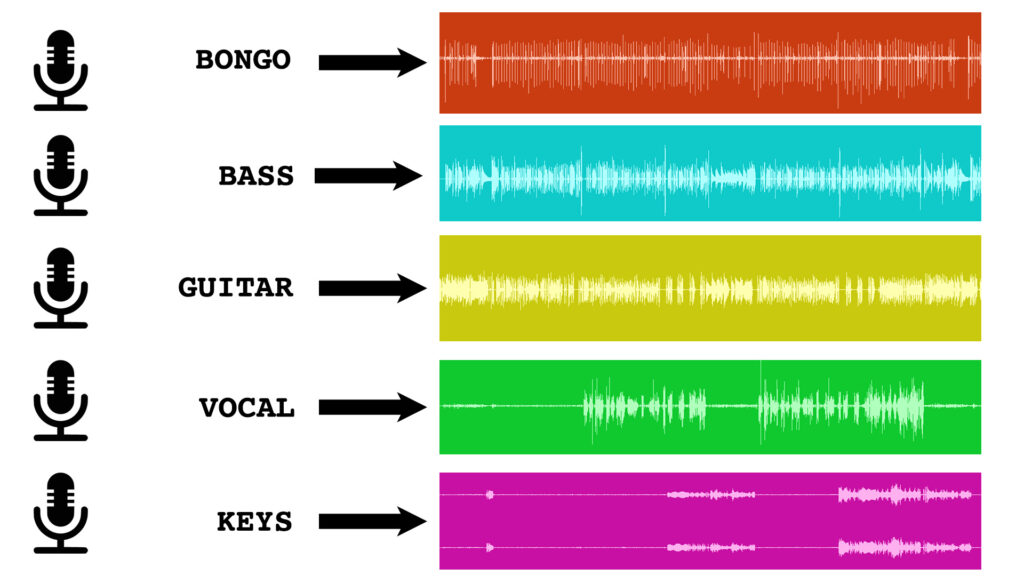
Mixing
Once we have all the parts recorded we need to combine the different tracks together in a pleasing way. This process is called mixing. We end up with a single piece of audio from this which we call a mix.
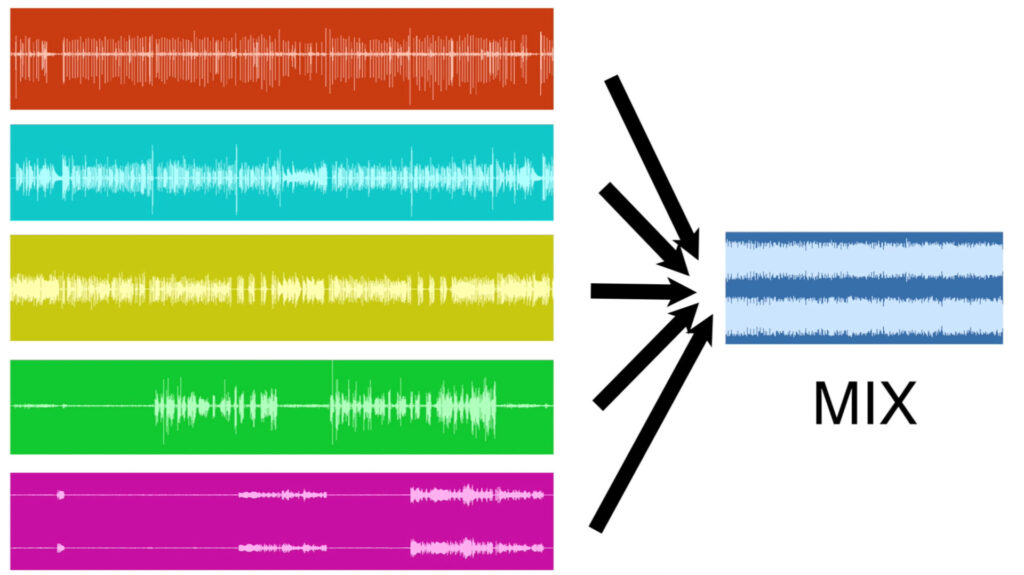
When we have done the mixing and we have our mix we cannot separate out the individual elements anymore, for example we can’t make the vocal louder or turn the snare drum down. It’s a bit like making a mix for a cake or bread, once you have mixed the ingredients into the dough you cannot remove the flour!
The mix does itself have two tracks, left and right. One is sent to the left speaker and the other to the right in a standard stereo setup. The mix can also be referred to as a ‘two track’ or a ‘pre master’
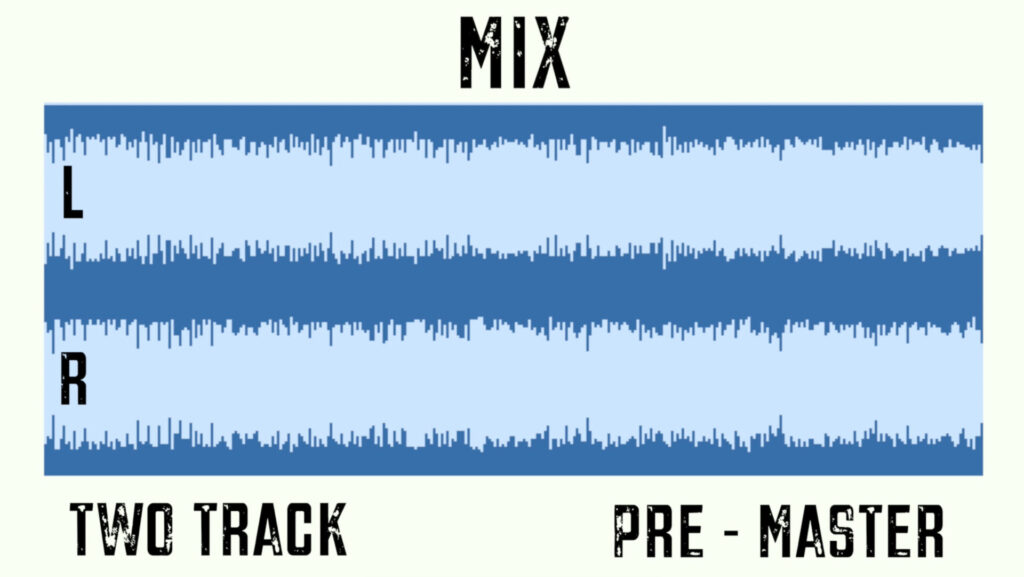
Mastering
This two track or pre master is what we have to work with when mastering. As we can’t adjust the individual layers we are really looking at the entire piece of audio as one and attempting to make small changes to improve the music.
The number one a mastering engineer has at their disposal is fresh ears. When they receive the pre master it will be the first time they have heard the music. This means they will be able to spot things that those involved in the long process beforehand won’t.
How do we master music?
When mastering you are looking at a lot of the same things you do when mixing. Volume, dynamics, punch, spatialisation, vibe etc. The main difference is that the changes are very small and the overall aim is to finish off and finalise the music for release so it plays well on different sources.
What does it do to the sound?
The main thing that people will notice about a master compared to a pre master is usually the volume. What we mean when we say volume though is often dynamic range. As we all know, we can just turn the volume up on our device if we want to hear the music louder.
The thing is, we want our music to be as loud as the last thing we heard because it will just sound weak if it’s quieter. Louder sounds better to the ear, it’s just a fact.
The way our brains measure sound is by the average level, otherwise referred to as RMS or LU. During mastering, we aim to lift this average level so it’s comparable to other recordings in the style. The main way of doing this is with a limiter.
In digital audio we always have a maximum level so we use a limiter to chop off some of the peaks of our pre-master.
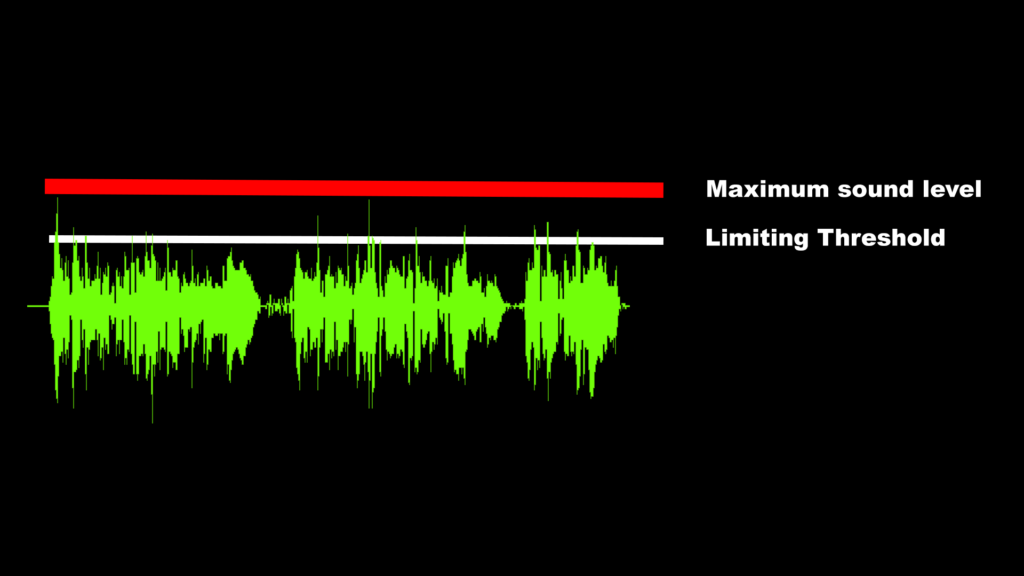
This then allows us to turn up the overall level of the sound, effectively making the quieter parts louder and reducing the range between the quietest and loudest sounds.
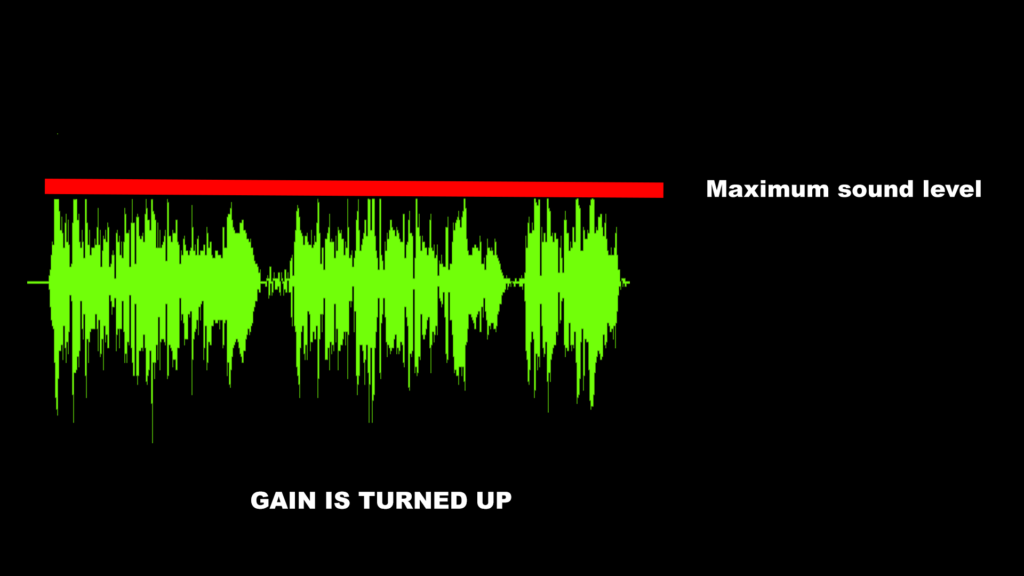
Voila! The average level of the music has increased and so it seems a lot louder without having to turn up your stereo!
How much better will I sound?
Mastering can’t work miracles on a poor mix, it’s meant to be a ‘finishing off’ process. If the desired results cannot be obtained by mastering the track, a remix is required. Mastering can add 5% or 10% to a recording but it will not make a bad recording sound good.
Why master at all then?
Good question. Quality control is probably the chief reason. Allowing another person’s fresh perspective on the music before release is a wise idea. They will hear it in a new way and be able to (if necessary) advise the mixer on changes they could make to improve the mix before re-submission.
Even if you don’t use a separate mastering engineer, you would still need to do some kind of mastering process. Doing it with the tired ears of a self-producer can often lead to making the track sound worse rather than better!
What about stem mastering?
Ah-ha! OK this is possibly partly what causes a lot of confusion.
Tracks are not stems.
……….Stems are small groups of tracks:
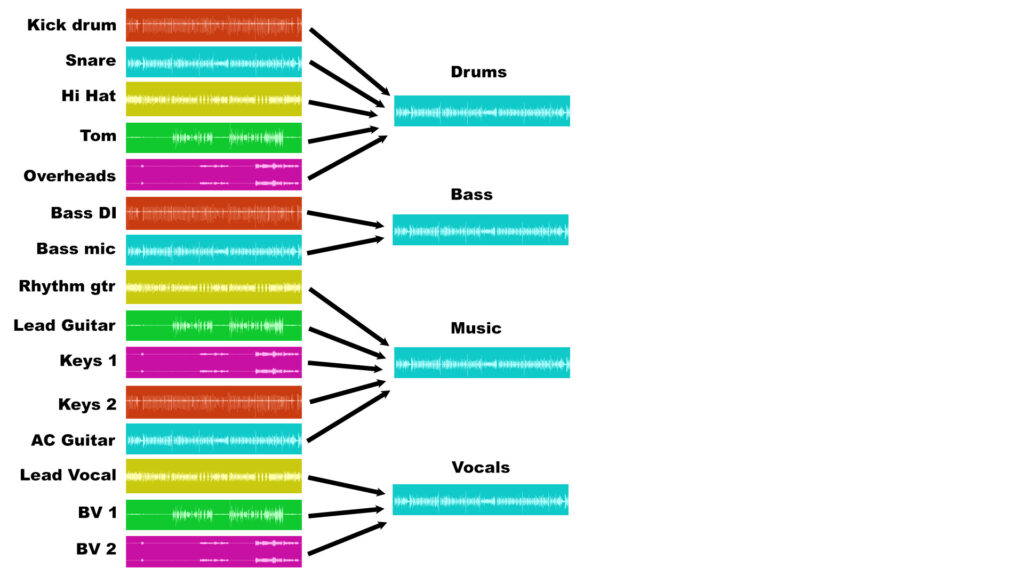
We can take all of our drum tracks and mix those into a drum stem. The same applies to any grouping you’d like to make. In the above example we have drums, bass, vocals and music.
If we would like a stem master, we send these stems off separately to be mastered. This is where the line between mixing and mastering becomes blurry.
This time, the mastering engineer has some separation possibilities. They can now turn the vocals up. They can compress just the drums or put chorus on the bass. In practice the changes would still be small but this opens up the scope of the mastering engineer significantly.
So, stem mastering looks like this:
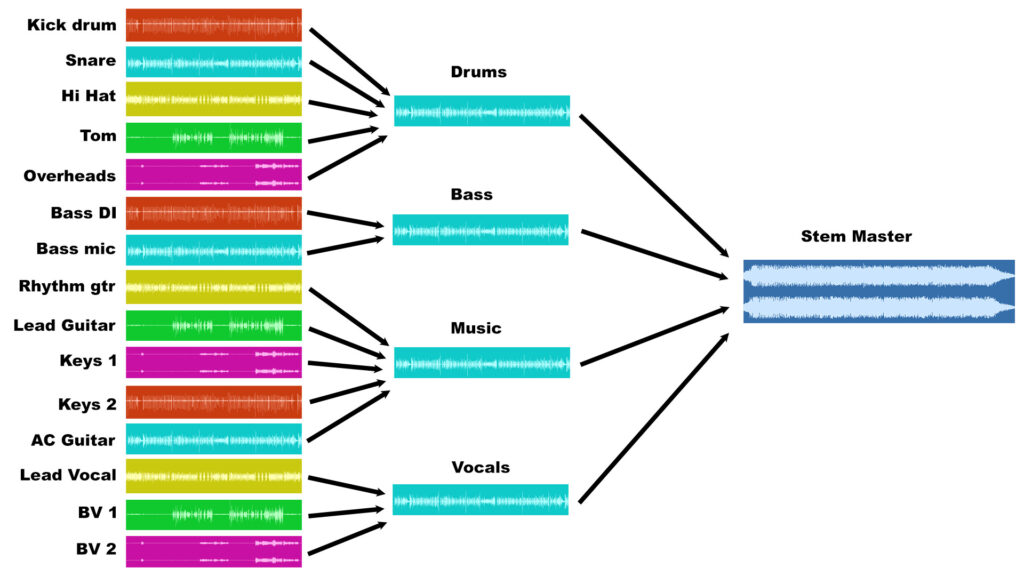
And standard mastering like this:
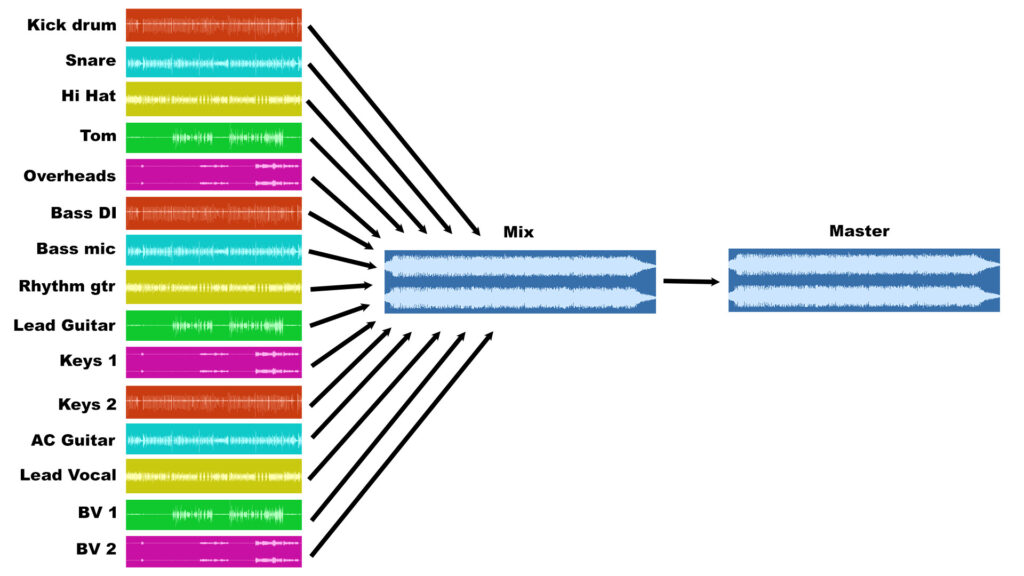
I hope this has made mastering a lot clearer as a concept, do tell me in the comments section of the video if I can cover anything else of use. If you would like me to listen to your mix and give you some advice or to master your tracks do get in touch for a chat.
